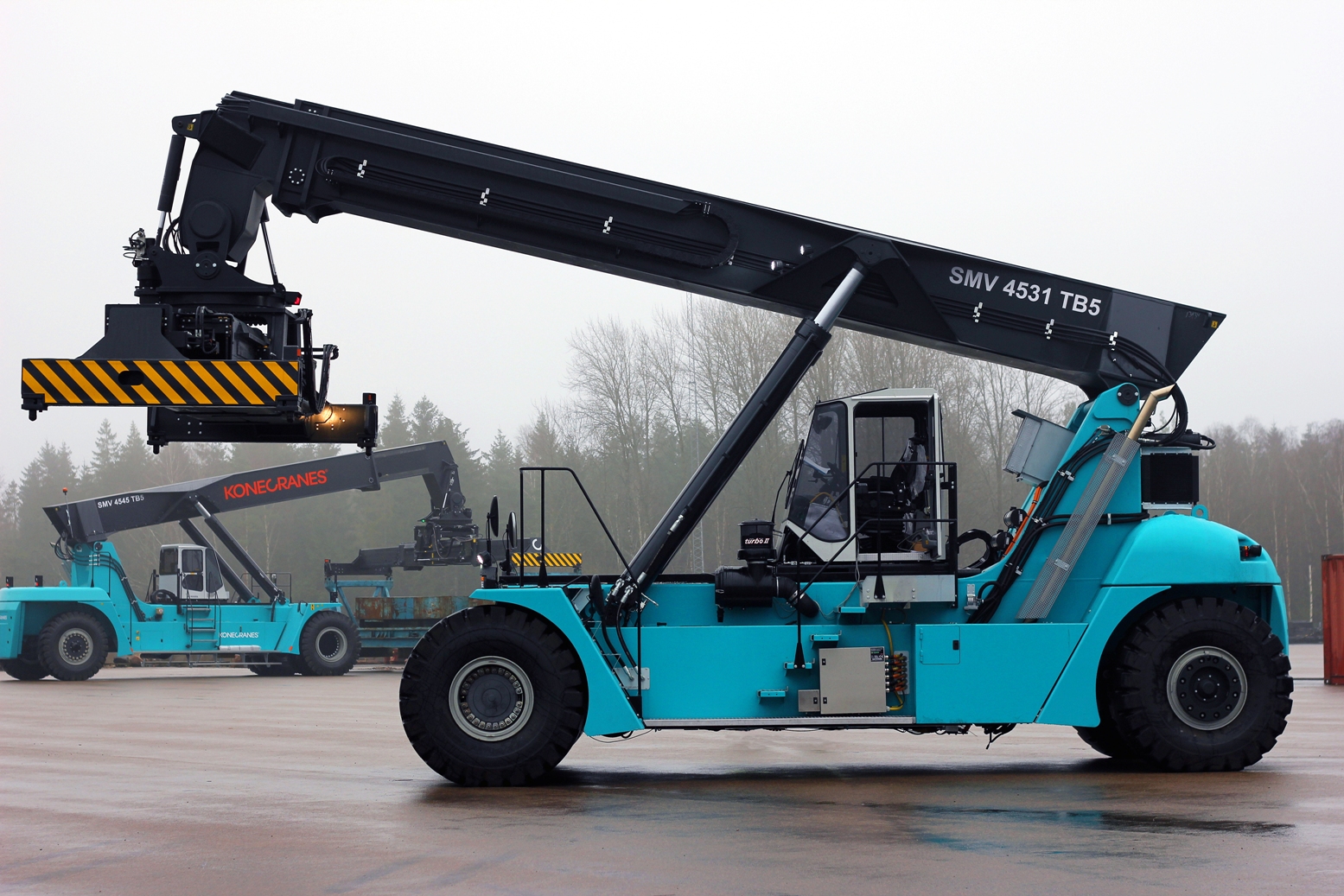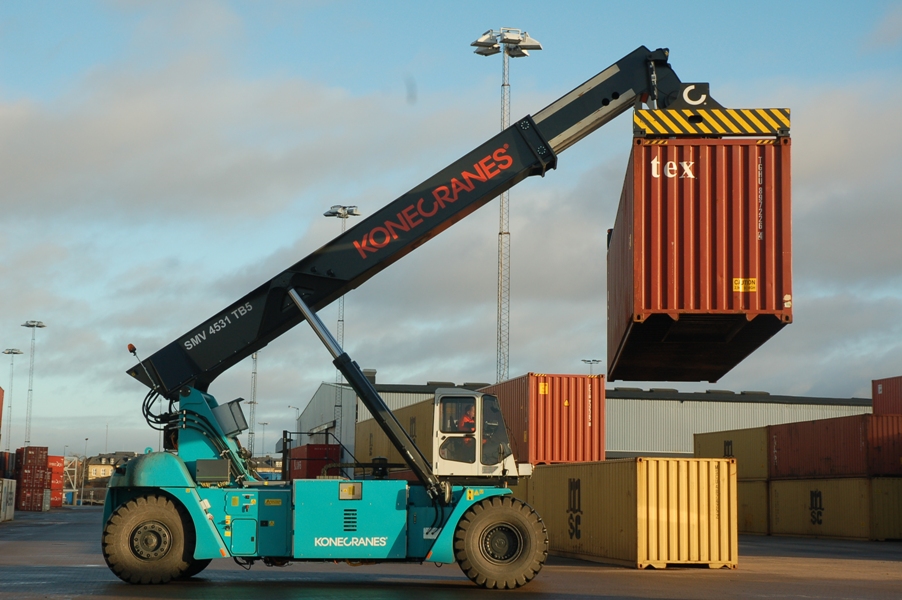Konecranes is a world-leading group of Lifting Businesses™ offering lifting equipment and services that improve productivity in a wide variety of industries. The company is listed on NASDAQ OMX Helsinki Ltd (symbol: KCR1V). With over 12,000 employees at more than 600 locations in almost 50 countries we have the resources, technology and determination to deliver on the promise of Lifting Businesses™.
Konecranes is proud to announce the introduction of the world’s first hybrid reach stacker – the SMV 4531 TB5 HLT for container handling, with a lifting capacity of 45 tons. It features a hybrid diesel/electric driveline, electrified hydraulic lifting system, and a super capacitor based energy storage. This innovative lift truck will cut fuel consumption and emissions with at least 30% while offering improved performance, acceleration and response to driver’s commands.

“Konecranes is a pioneer and leader in lifting technology and service. Our new hybrid reach stacker is an exciting step forward for our industry and further proofs that Konecranes is committed to offering its customers eco-efficient products and services,” says Lars Fredin, Vice-President and Head of Business Unit Lift Trucks, Konecranes.
Significantly reduced diesel fuel consumption
The new Konecranes hybrid reach stacker will offer customers substantial cost and environmental benefits. Estimated fuel consumption at normal handling of fully loaded containers will be at least 30% lower than for equivalent diesel powered reach stackers. This is achieved by electrifying all flows of energy across the driveline, the hydraulic lifting system and the energy storage system.
“Propulsion and lifting are powered by dedicated electric motors that all can operate in regenerative modes. The energy generated from braking and load lowering is recovered and stored for later re-use. This results in a substantial reduction in diesel fuel consumption and environmental impact. Meanwhile, productivity is increased in terms of quicker response and higher acceleration,” says Anders Nilsson, Technical Director, Konecranes Lift Trucks.
“Potentially, the diesel engine of the hybrid reach stacker could be replaced by another source of electrical energy, as technology and price allow. Such examples may be fuel cells or an energy storage that can be recharged via a connection to the power grid,” Mr. Nilsson continues.
Electrification of the driveline
In a conventional reach stacker, the driveline is a diesel/mechanical system consisting of a diesel engine, torque converter and transmission. The diesel engine produces the energy for propulsion. The flow of energy is mechanical and a quite complex mechanical gearbox is required. The energy generated by braking is converted into heat that is dissipated to the ambient and wasted.
In the new Konecranes hybrid reach stacker, the driveline is a serial configured diesel/electric system consisting of a diesel engine, an electrical generator and an electrical traction motor. The diesel engine runs at constant RPM for optimum fuel efficiency and powers the generator. Propulsion is provided by an electric motor that is an integral part of the drive axle. This motor also generates electrical energy when braking, minimizing the need for mechanical braking and saving energy.
Electrification of the hydraulic lifting system
In a conventional reach stacker, the diesel engine mechanically drives variable displacement piston pumps that provide the hydraulic energy for lifting and steering. The energy that is generated in lowering is dissipated to the ambient and wasted.
In the new Konecranes hybrid reach stacker, the hydraulic pumps are electrically driven and electronically controlled. Dedicated electric motors drive the pumps that provide the hydraulic energy for lifting and steering. The speed of these pumps can be controlled independently of diesel engine speed. More importantly, the return flow from the hydraulic cylinders is not converted into heat, but fed backwards through the pumps which now act as hydraulic motors, thus regenerating electrical energy.
Electrical energy storage
A traditional reach stacker has conventional batteries for starting the engine and powering the electrical systems including lights.
The new Konecranes hybrid reach stacker has a super capacitor system for energy storage that is connected to the truck’s electrics. This system stores electrical energy that has been recovered for later re-use, and boosts the diesel powered electrical generator at times of peak power demand.

www.konecranes.com

